Behind rather inconspicuous walls, very close to the main railway station, lies the Real Monasterio de San Jerónimo de Granada. For us, next to the famous Alhambra, it is a sight in Granada that should not be missed.
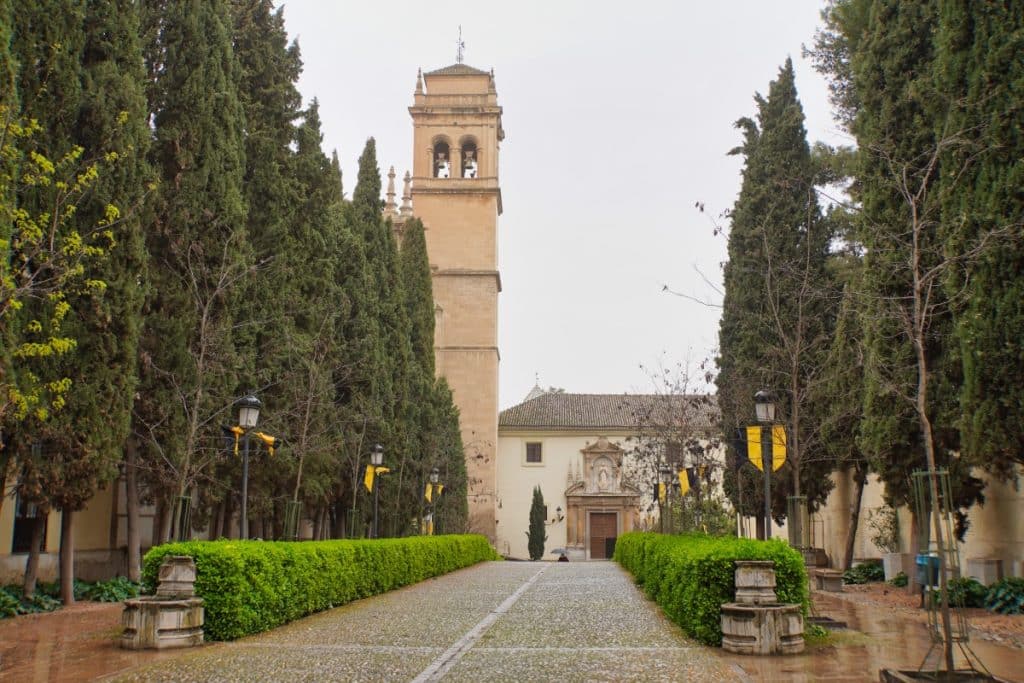
Stepping through the gate of the wall, a wide path leads to a rather plain-looking church building with the adjacent monastery. The surprise was to await us inside.
Monastery history
The Catholic Monarchs Isabella I of Castile and Ferdinand II of Aragon founded the monastery at Santa Fe outside the city of Granada. It is dedicated to Saint Jerome of Stridon and the Hieronymites, a group of the Augustinian Order, lived in this monastery.
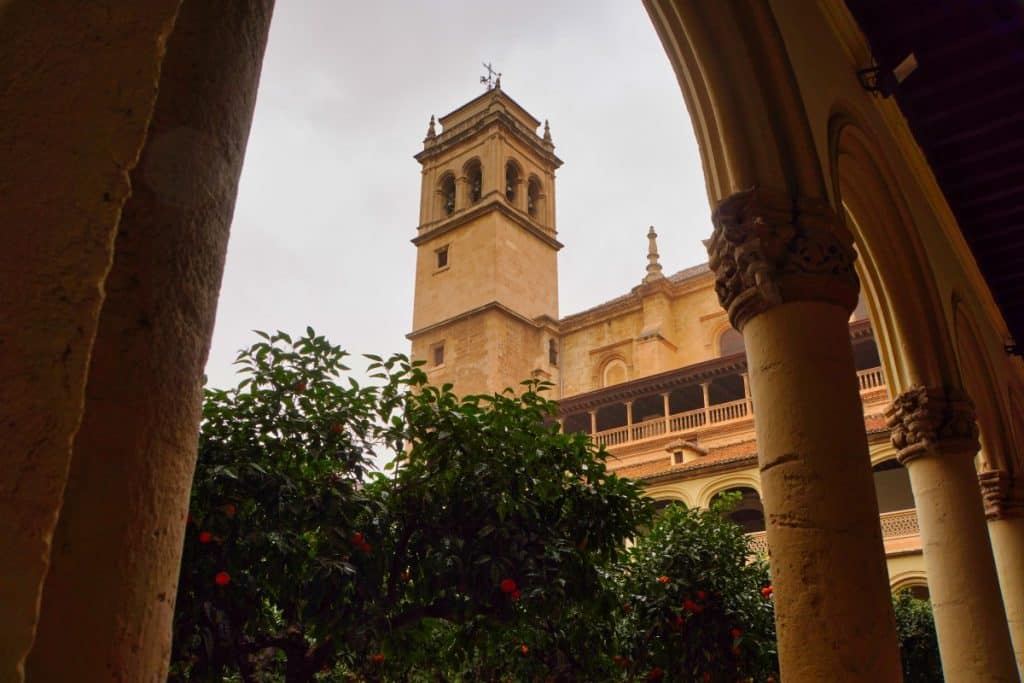
In 1504, construction began on the building in Granada. The main architect was Diego de Siloé, who was supported in his work by numerous other architects and artists.
For the construction, Siloé oriented himself on the ground plan of church buildings customary for the order. Thus, the church has the shape of a Latin cross with a raised choir and the altar behind a wide staircase. The main chapel was finally completed in 1522.
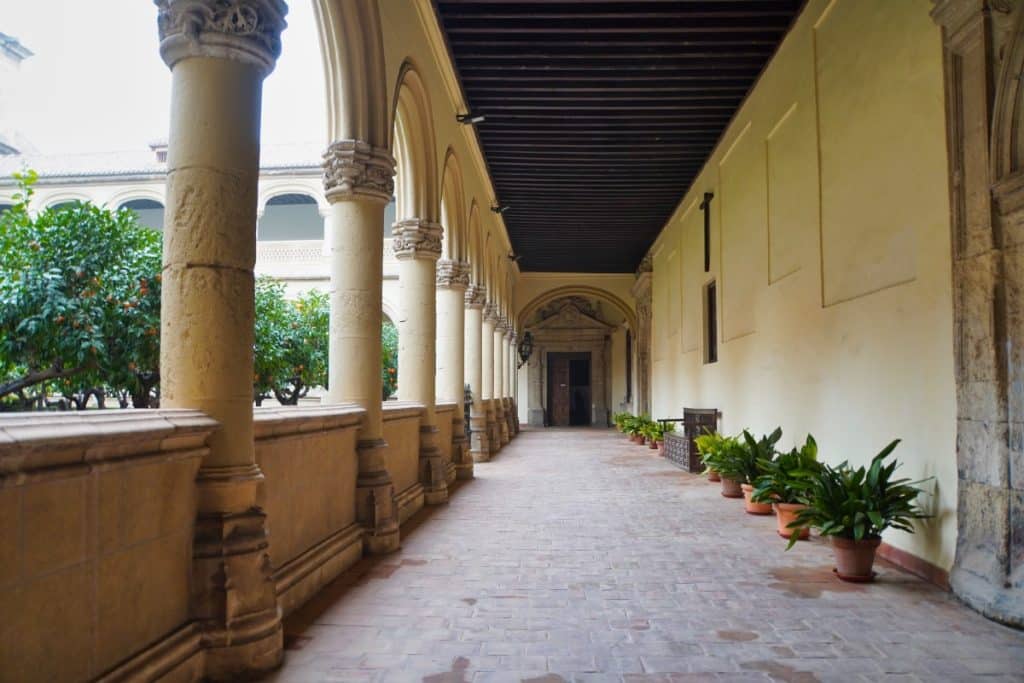
The monastery consists of two cloisters, each of which is laid out around a garden. The older cloister is furnished in the Renaissance style. The second cloister with the adjoining rooms was the residence of the Empress Isabella of Portugal in Granada at the time. Due to a cold winter and her pregnancy, Isabella was forced to stay in Granada for a while and lived in the convent.
The monastery also houses the tomb of Gonzalo Fernández de Córdoba – the brave army commander surnamed Gran Capitán. He and his wife are buried under the main chapel.
The monks lived in one of the city’s most prosperous convents for over three hundred years. Over the years, they were even able to expand it structurally.
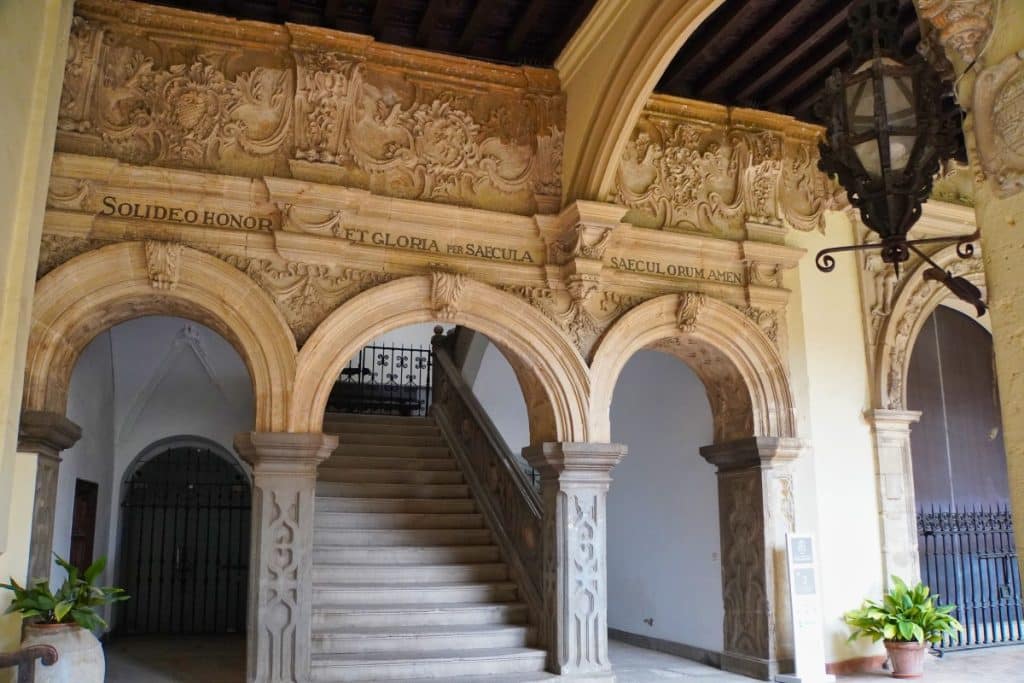
In the 19th century, Napoleonic troops occupied the monastery and used it as quarters for their artillery. The French looted the treasures, desecrated the tombs of the Gran Capitán and destroyed the bell tower. They demolished the church’s slender tower and used its stones to build the Puente Verde, which crosses the River Genil.
In the course of Mendizábal’s secularisation in 1835, the monastery building became a barracks.
In 1967, the building was returned to the Hieronymite Order and today the monastic order once again lives in the Monasterio de San Jerónimo de Granada. It was not until the 1980s that the tower, which had been destroyed by the French, was rebuilt.
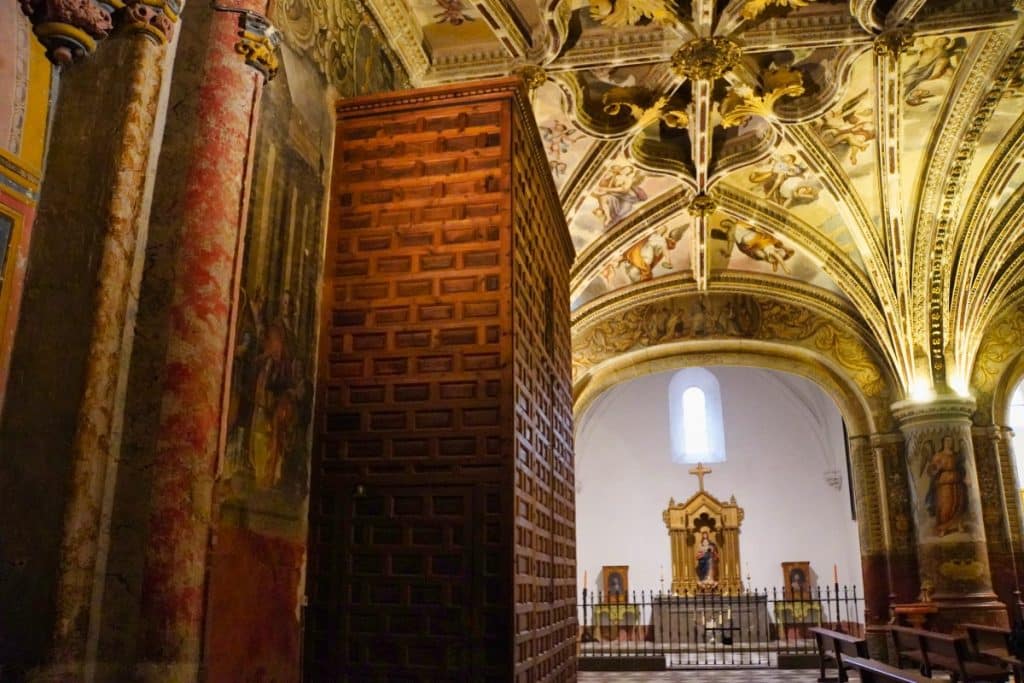
Visit to the Monasterio de San Jerónimo de Granada
After passing through a simple vestibule with a ticket office, we enter the two-storey cloister, which is open to visitors. The side galleries are formed by nine arches. On the central arches you can see the emblems of the Catholic Monarchs and the friar Hernando de Talavera.
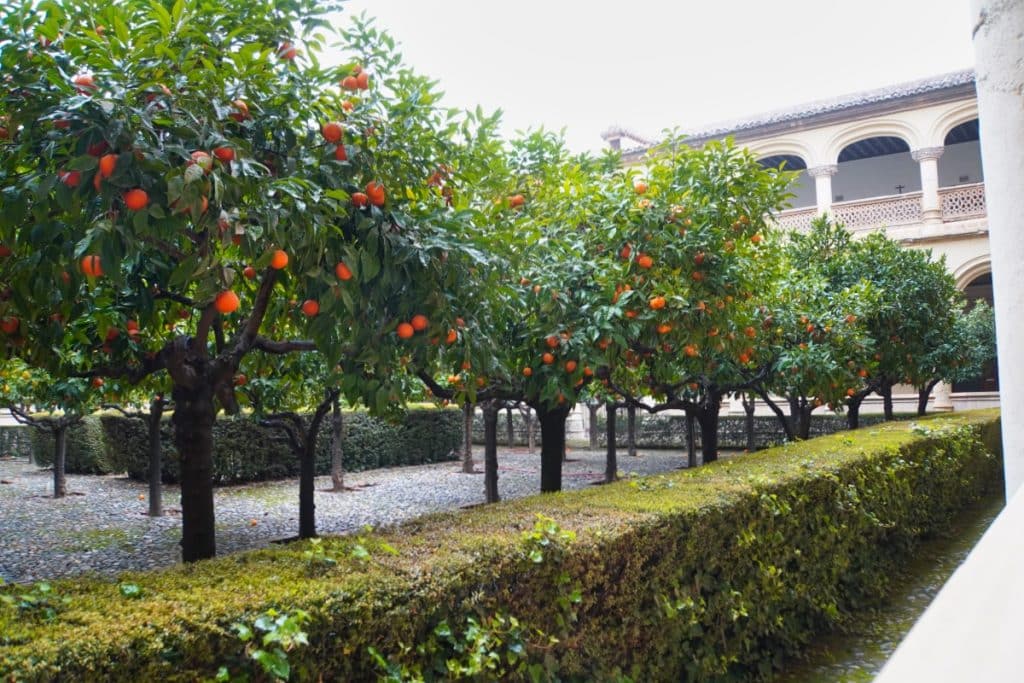
There is the scent of oranges growing brightly on the trees in the courtyard. It is a wonderful place of tranquillity and even the visitors were only whispering to each other. I would have loved to sit down on a bench under the trees and eat a freshly picked orange.
In a corner of the cloister was a lonely chair in front of a small flap in the wall. Could one sit here to confess? I did not try it…
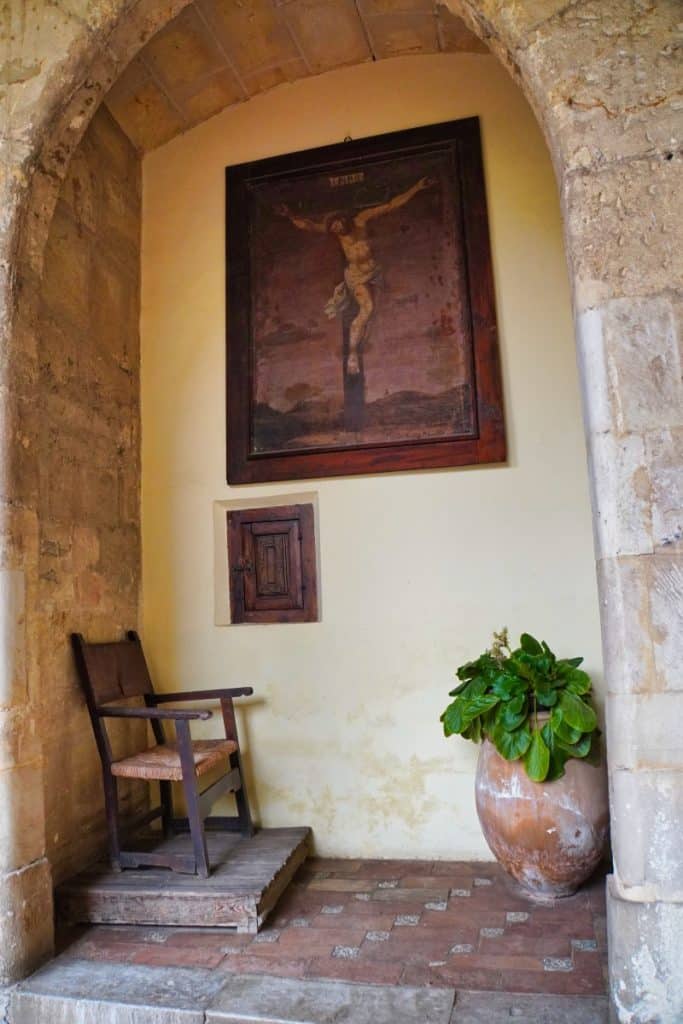
The second existing cloister and also some of the adjoining rooms cannot be entered. They are used by the monastery’s order.
What an altar
When you enter the San Jerónimo Church, your gaze falls almost magically on the altar in the main chapel. It is a work by Pablo de Rojas. On the altarpiece you can see numerous saints, heroes, mythical creatures and angels, as well as historical figures and military greats.
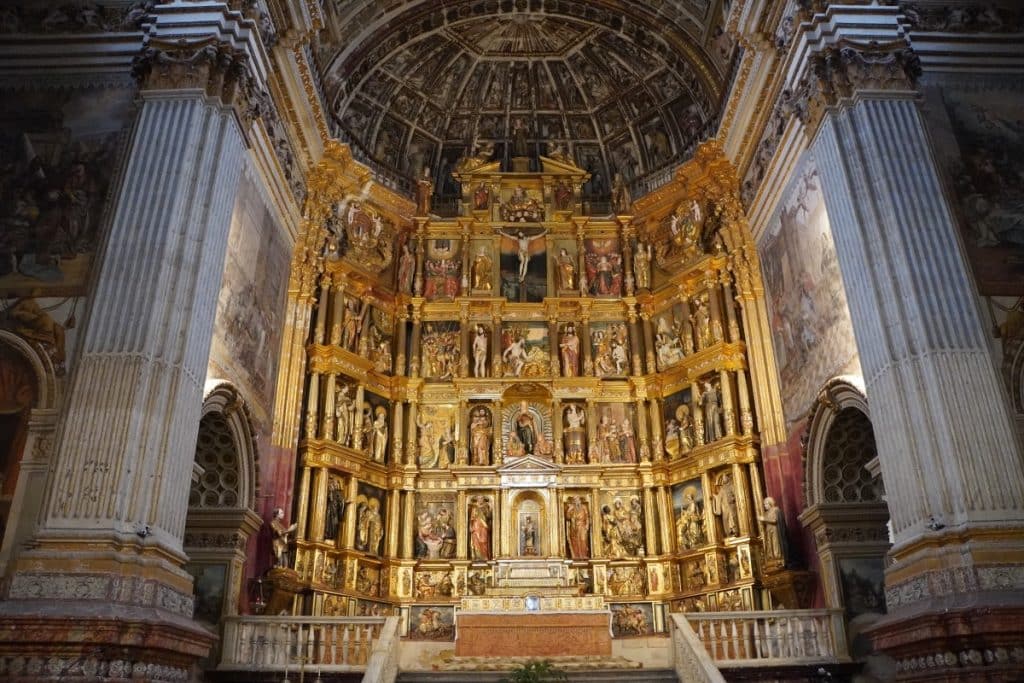
I was already impressed by the size of the altar. It becomes even more impressive when it is illuminated. There is a small timer that, for little money, switches on lighting that puts the altarpiece in the right light.
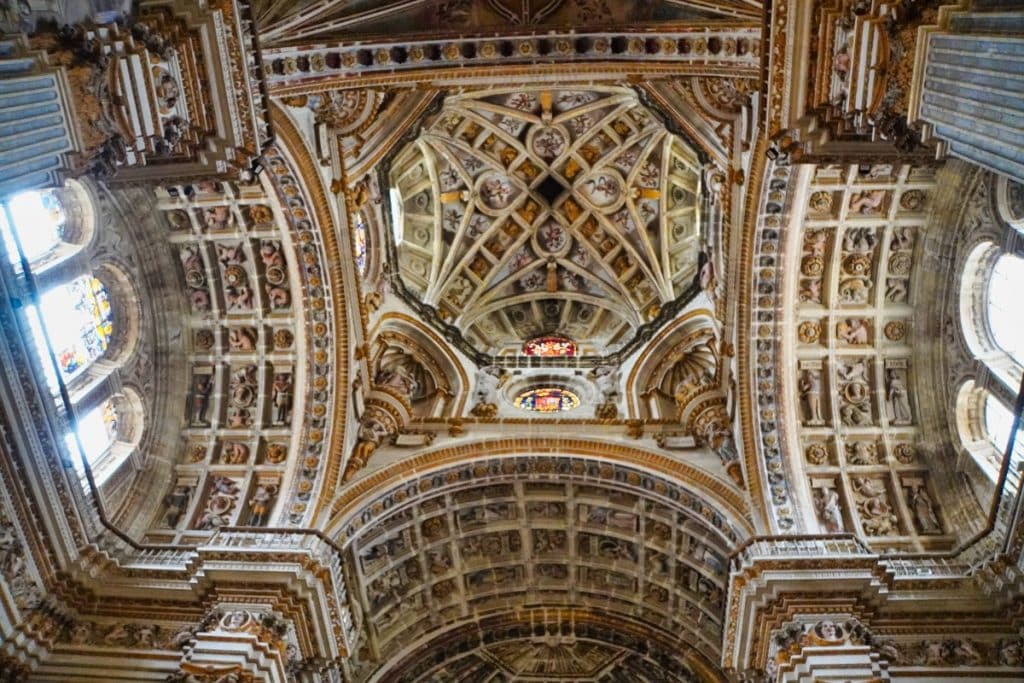
The entire interior of the church is richly decorated. I particularly like the coffered ceiling with the beautiful paintings and the ornate arches. Numerous sculptures, side altars and paintings adorn the church.
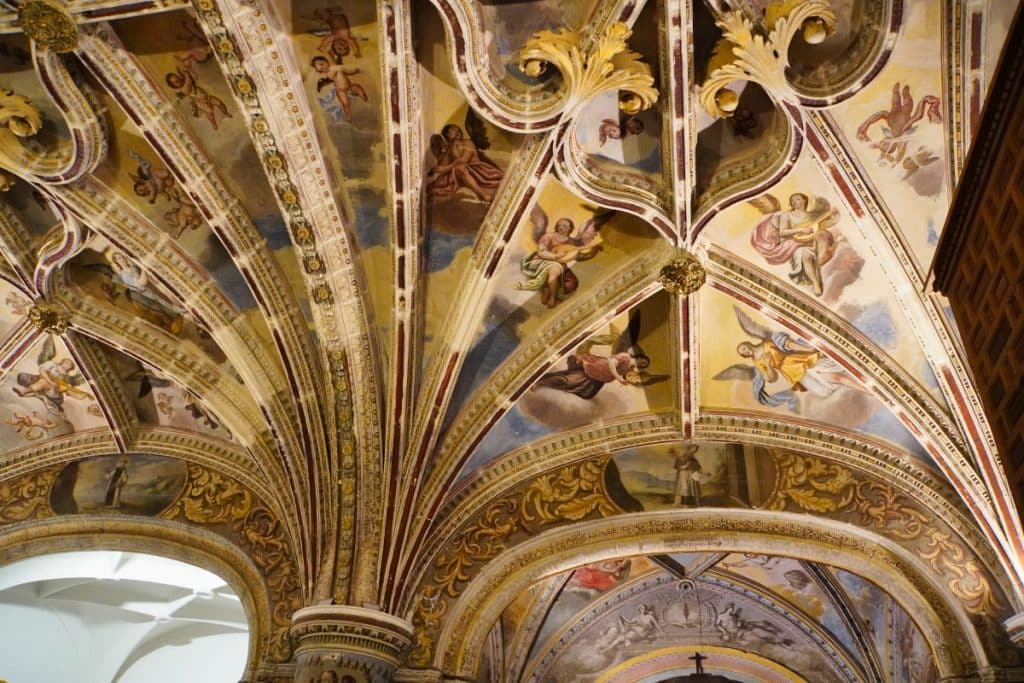
There are also smaller, less spectacular-looking discoveries in the church interior that appealed to me very much. For example, I saw a small chapel that still had remnants of the old wall design.
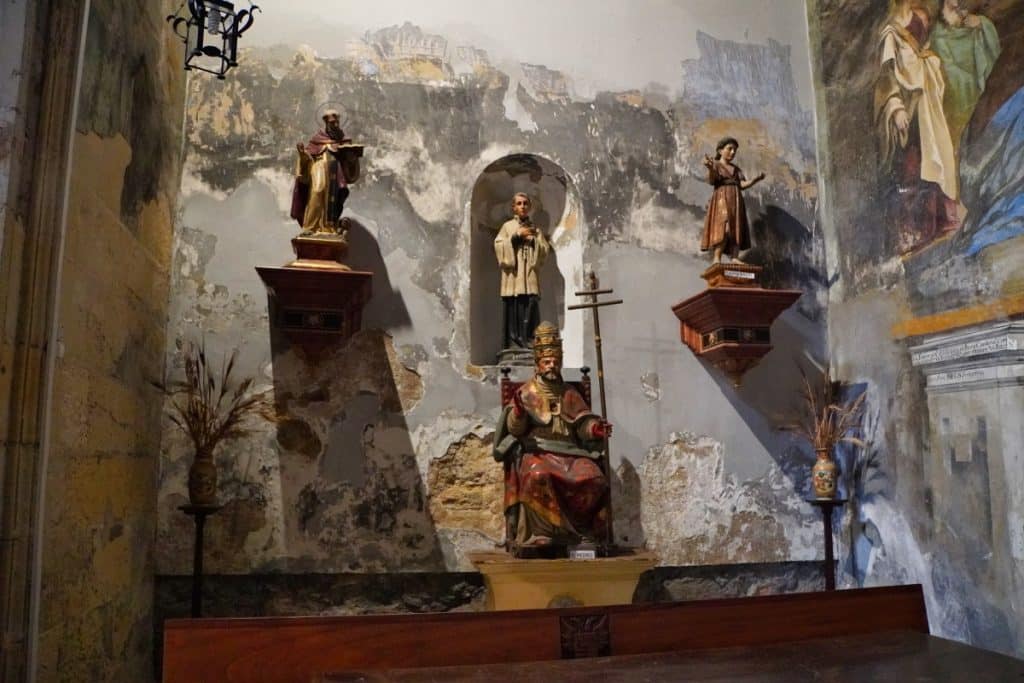
The church is so ornately decorated that you need some time to be able to look at everything in peace.
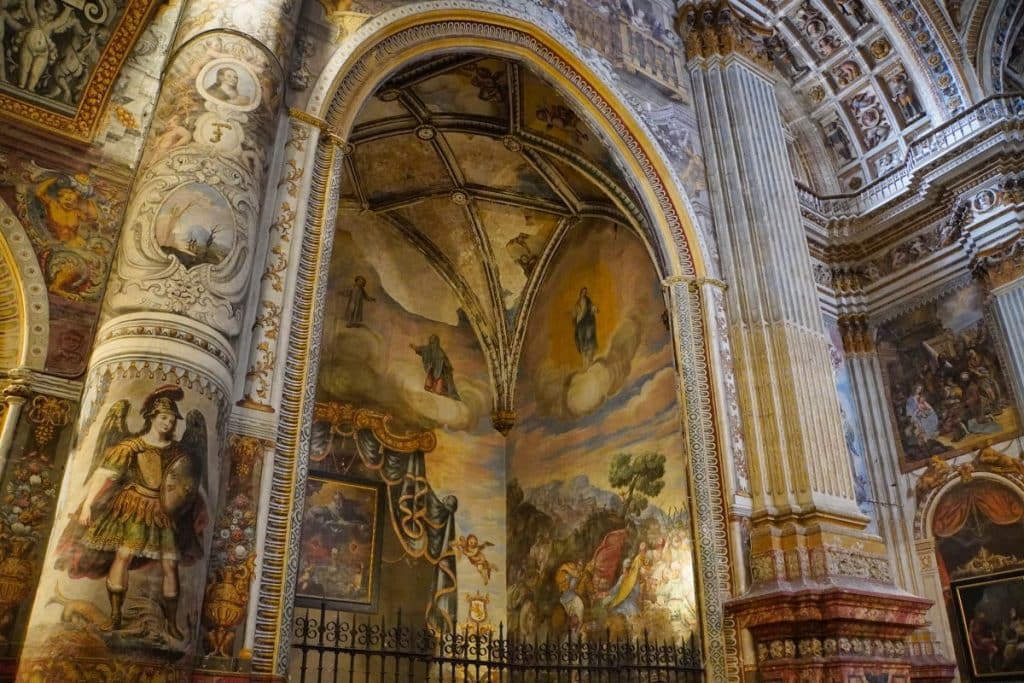
Address:
Monasterio de San Jerónimo
Calle Rector Lopez Argueta, 9
18001 Granada
Opening hours:
March-August:
Monday – Sunday: 10:00 – 13:30 and 16:00 – 19:30
September-February:
Monday – Saturday: 10:00 – 13:00 and 15:00 – 18:30
Admission prices:
Adults: 5,-€
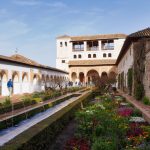
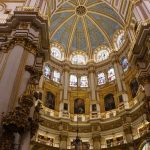

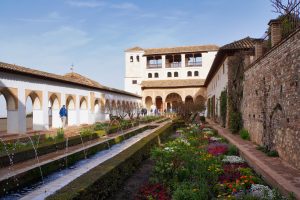
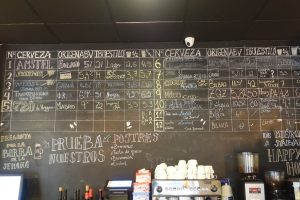
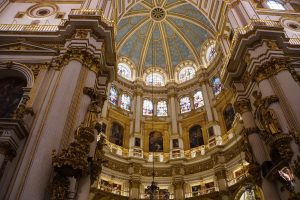
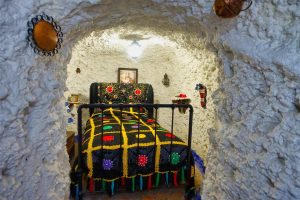

Leave a Reply